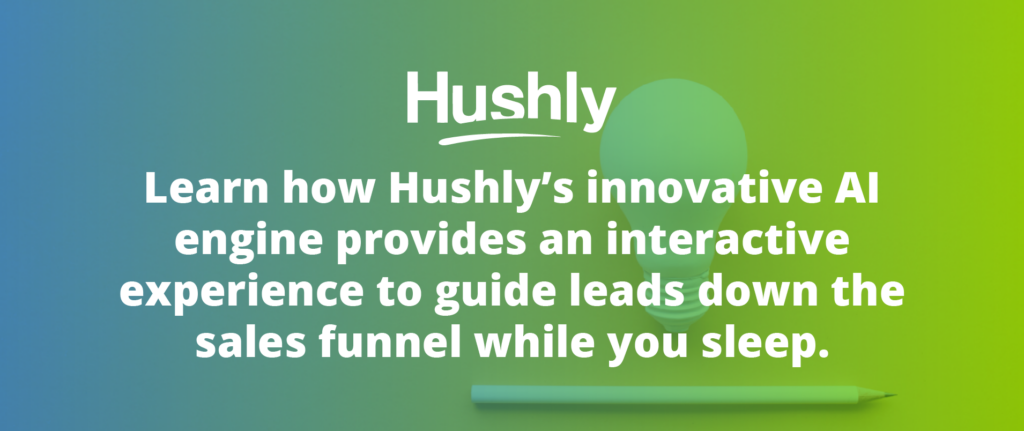When you think of the B2B buying process, what do you imagine?
Certainly not someone responding to your cold email to set up a call and get the ball rolling, right?
Gartner’s research shows us that the B2B buying process is far from linear. In fact, it looks more like a tangled web of string lights:
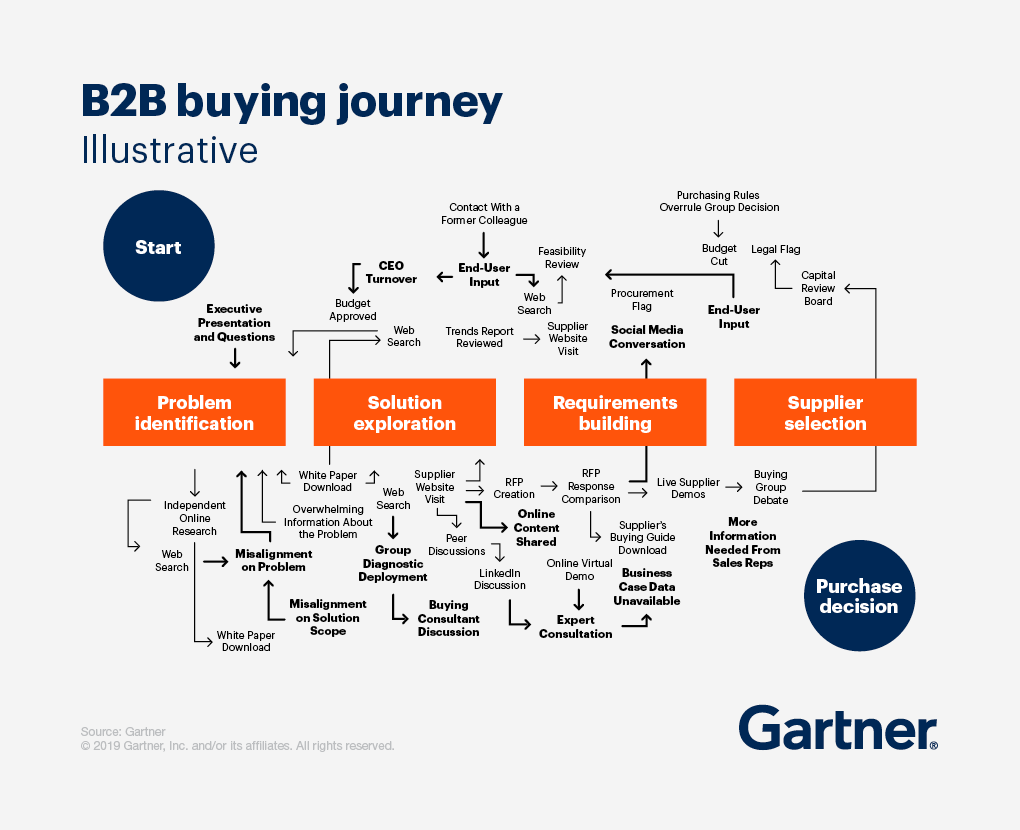
If you think this is confusing for you, just imagine how your buyers feel. It’s no wonder 77% of buyers said their latest purchase journey was “complex” or “difficult.”
Your B2B content marketing should take every stride to make your buyers’ lives just a little easier.
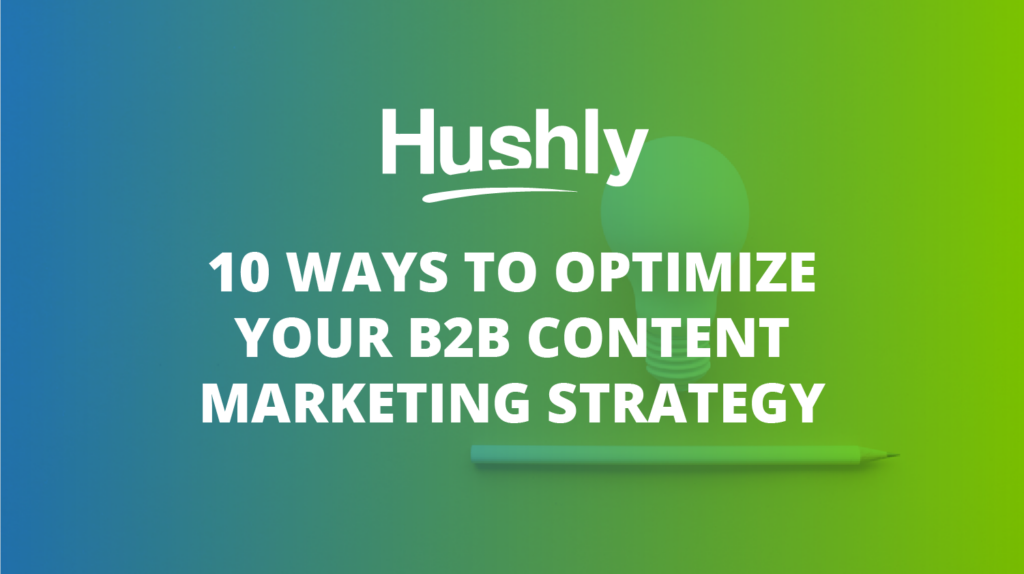
10 Strategies to Optimize Your B2B Content Marketing Strategy in 2020
89% of buyers expect brands to anticipate their needs and make adjustments accordingly. Your content should provide visitors with all the information they need to learn about your industry and company. It should also anticipate their emerging problems and provide nuanced answers as they arise.
1. Create Account-Specific Content
The average B2B company devotes 16% of its marketing budget to account-based marketing strategies. Almost all organizations have some kind of ABM strategy at this point: 89%.
You can thank the rise in AI accessibility for that. Automation makes it easy to identify your key accounts, build relationships with customers, and identify new potential companies for outreach.
Consider creating unique blogs, eBooks, and videos for specific accounts based on your research.
2. Research the Needs and Problems of Your Audience Deeply
B2B content writing research is an ongoing process. Buyer needs are dynamic and the buying process isn’t linear.
You can’t pinpoint everything but you can do your best to research via Twitter, market research postings, press releases, Reddit, industry blogs, and other relevant channels.
3. Add Interactive Elements to Your B2B Content Marketing Strategy
Interactive content is vital for engagement and lead nurturing. It’s a common misunderstanding that attention spans are shorter – that’s not true. People have no problem bingeing videos and blogs when they’re relevant.
It’s no surprise that 58% of buyers say they would binge your B2B content for up to 20 minutes if it’s presented in an interactive format. Ideally, 68% would like to see it organized better, such as by pain point. Over half would also like to see your content organized by vertical or industry.
AI and machine learning meet this need perfectly. Visitors can choose how to organize their content and AI will provide personalized recommendations:
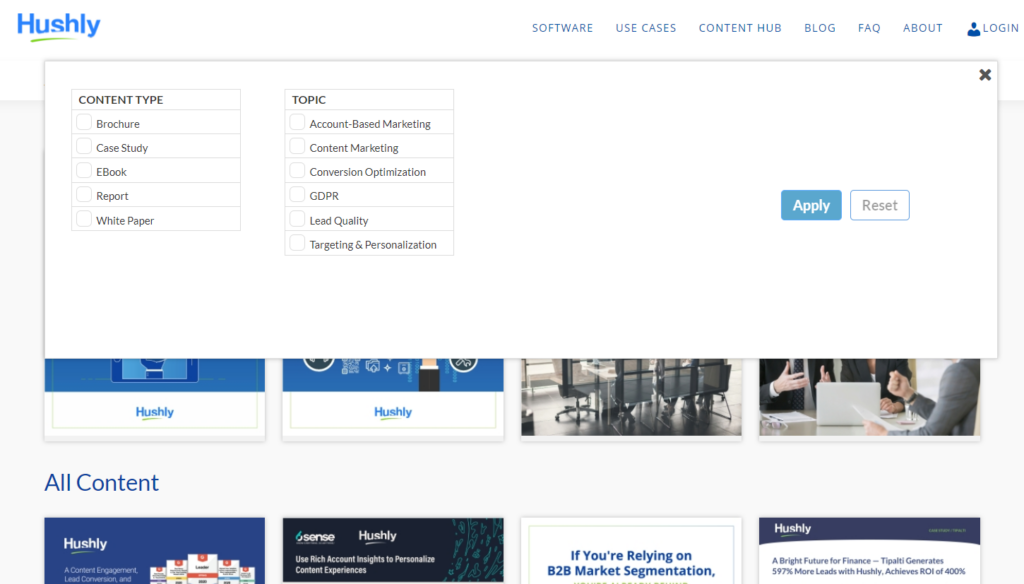
4. Personalize Every Session to Maximize Visibility of Your B2B Content Writing
Of the 84% of marketers using AI, most of them are leaning on the technology for creating personalized experiences on individual channels.
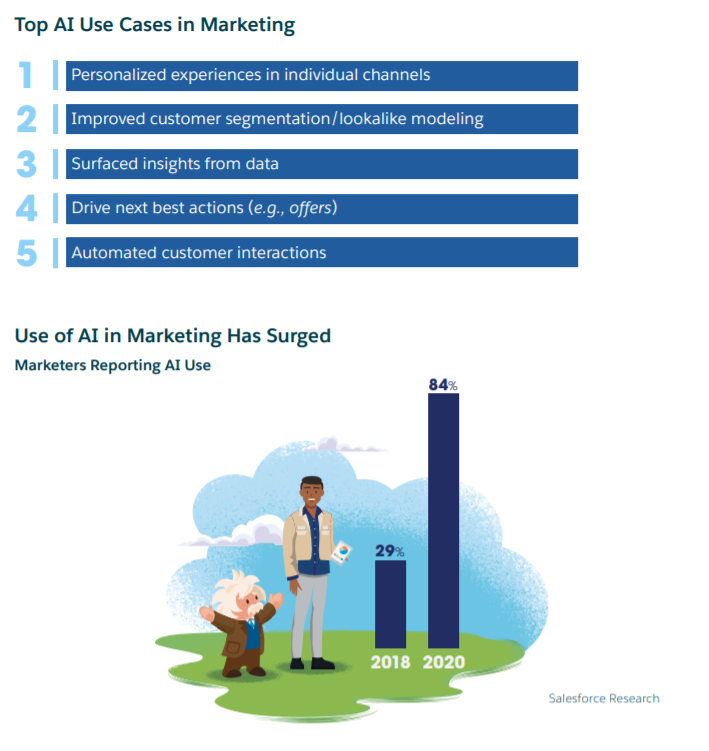
Features like an adaptive content hub use machine learning to study on-site behavior and provide every visitor with personalized content recommendations – whether they’re a known lead or anonymous visitor.
5. Develop More Content for Customers Specifically
Most B2Bs could benefit from improving their customer experience to build loyalty and prevent churn. Part of your ABM strategy should involve B2B content marketing specifically for your current accounts.
Business resource centers are especially valuable tools for organizing your customer-centric content such as tutorials, troubleshooting, FAQs, use cases, explainer videos, and more.
6. Promote Your Content Across the Relevant Channels
You can’t be everywhere at once. Instead, focus your resources on specific channels where you know leads will see your content.
Insights from AI-driven technology can also help you track your visitors where they go online so you can identify patterns in blogs or forums for sharing your B2B content writing.
Meanwhile, use LinkedIn retargeting to personalize your sponsored posts based on the content someone viewed while on your website.
7. Create a Social Selling Strategy to Leverage Your B2B Content Writing
As you develop your B2B content marketing strategy, include tactics for social selling in your calendar.
- Choose specific LinkedIn or Facebook groups for sharing.
- Brainstorm questions you could ask in captions of your posts.
- Think of people you might tag in your post to spark conversations.
- Consider industry influencers for sharing.
- Look for relevant subreddits or forums for posting.
8. Craft the Right Types of Content for Your Audience
The average organization spends over $185,000 per year on B2B content marketing. While B2Bs with the most successful strategies tend to spend more, you can stretch your budget by optimizing the types of content you create.
For example, C-level employees tend to prefer video content. Meanwhile, end-users may want detailed tutorials and blogs. The key is to study your specific audience and create the right types of content for each segment, account, role, or firmographic.
9. Give Leads Plenty of Channels to Stay in Touch
Your leads might only spend 17% of the buying journey connecting with sales teams but that doesn’t mean they don’t want to connect in other ways.
Chatbots provide a low-profile alternative for leads to ask questions about your product or company. Likewise, make sure to provide a texting option for buyers to connect more casually along with a non-sales email address where they won’t feel pressured to buy.
10. Set Your B2B Content Marketing Free from Forms
An estimated 70% of B2B searches happen on mobile devices so creating a mobile-friendly website is key. Gated content behind lead magnet forms is just about as unfriendly as it gets on mobile devices.
Plus, gated content pushes away valuable leads. Instead, remove the forms and let your visitors consume your B2B content marketing at their own pace. They’ll consume more pieces of content each session, stay on your website longer, and you’ll only collect email addresses from genuine leads – not folks who only want your research.
Create a Hyper-Personalized Web Experience for Everyone
Hushly’s AI engine makes it easy for businesses of all sizes to reap the benefits of hyper-personalization. Using features like adaptive content hubs, personalized exit-intent popups, and self-nurturing landing pages, you can make sure every visitor gets the most relevant piece of content in front of their face when they visit your site.
Learn how Hushly’s innovative AI engine provides an interactive experience to guide leads down the sales funnel while you sleep.

